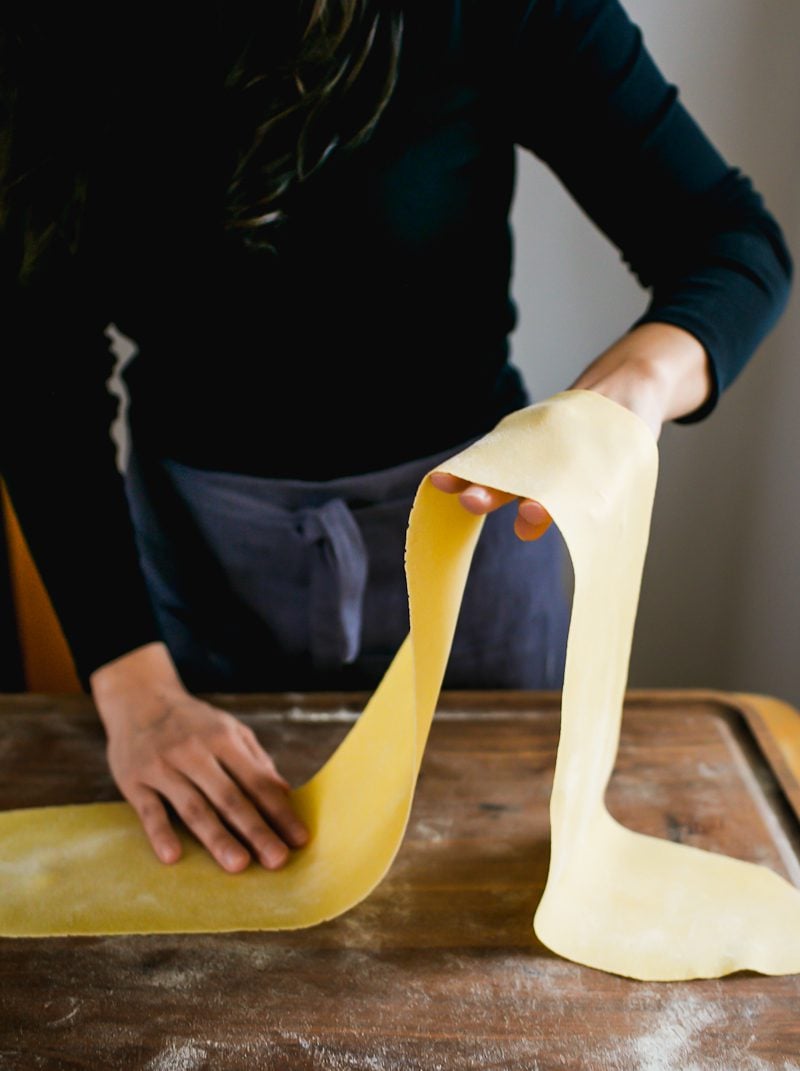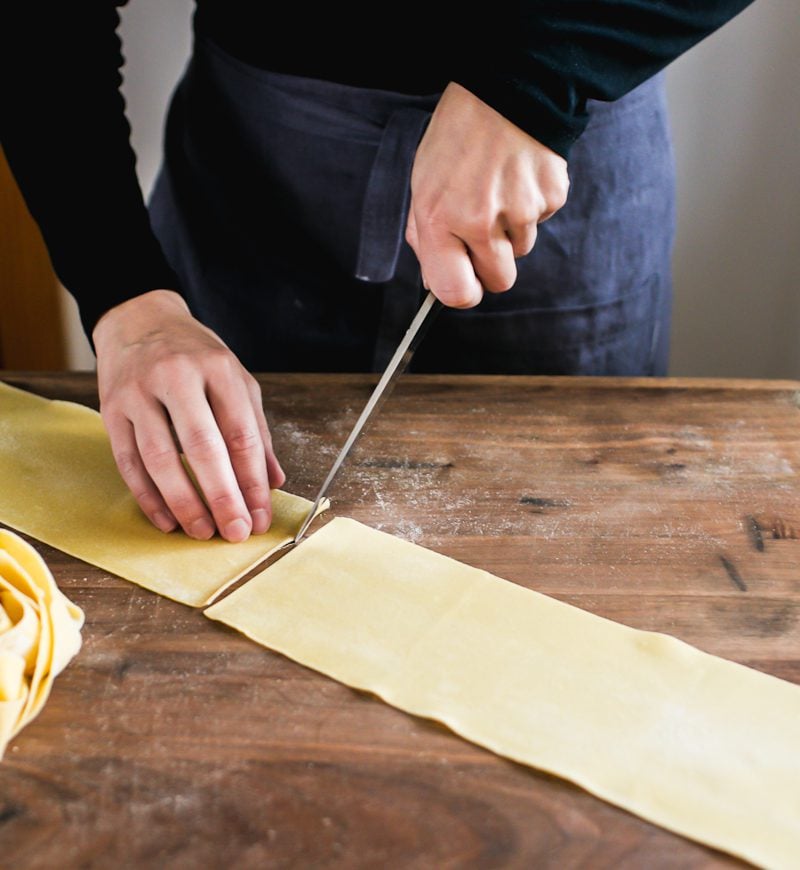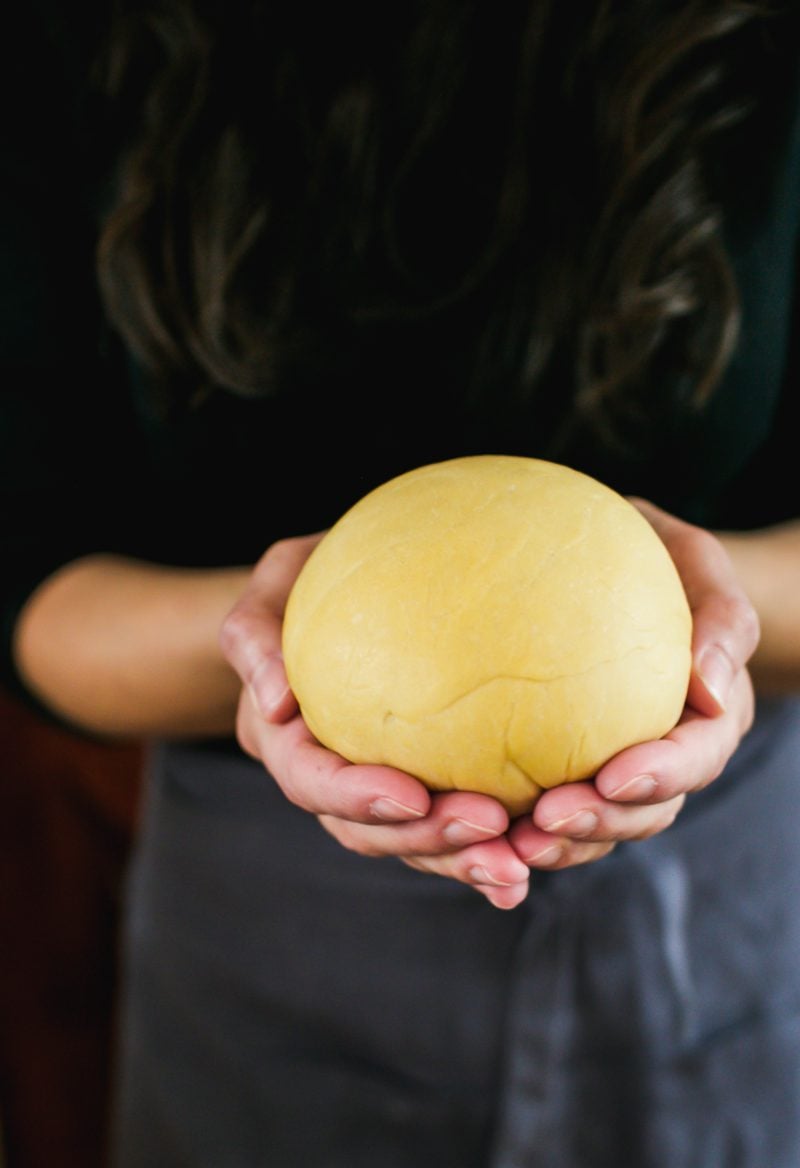Step #2: Roll Dough Into Sheets
Before you begin, set up your work station (no exceptions!): Find a large, clutter-free work space to spread out (I use the kitchen table). Your pasta sheets are going to be long! Dust your work surface and pasta machine with semolina flour to prevent sticking. Line a sheet pan with parchment paper to fit the inside dimensions of your pan, no clunky overhang. Cut 4 additional pieces to layer in between the lasagna sheets as you roll them out; set aside.
- Cut the pasta dough into 4 equal pieces. Roll out one piece of dough to make it the width of your pasta maker; it should be about 6 by 8 inches long. Cover or rewrap the other pieces to prevent them from drying out.
- Send the disc through the roller on the widest/lowest setting. This is “#1” on the Kitchen Aid attachment. Send it through a second time.
- Continue to roll the dough through settings #2-4 (2x on each setting) until the pasta sheet is slightly translucent and you can see your hand underneath. For even thinner noodles, you can go up to setting #5. Now, you’re ready to make lasagna noodles.


How to Store Lasagna Noodles
- At Room Temperature (1 hr. ): Spread the lasagna noodles in a single layer on a sheet pan lined with parchment paper. To prevent them from drying out, cover with another parchment paper sheet. Layer and repeat, ending with parchment paper on top. For up to one hour, store the item at a moderate room temperature while securely covered with plastic wrap. Alternatively, use an airtight container.
- To refrigerate for 12 hours, place lasagna noodles between parchment paper layers as previously mentioned. Chill up to 12 hours. Fresh pasta tends to oxidize and discolor after this timeframe. Oxidation will not effect the taste.
- To Freeze: Place lasagna noodles in an airtight container between layers of parchment paper and freeze for one month. Freeze up to 1 month. Defrost before using; they are easier to handle without breaking.
Ingredients & Equipment (You Will Need):
- Make space. To roll out the dough, you’ll need a sizable, clear surface—a kitchen table works well for this. Don’t forget this advice. Rolled out pasta sheets can measure up to 3ft. long.
- Lasagna noodles need to be thin (but not too thin!). The correct thickness is approximately . 60- 1 mm thick. Should the noodles be excessively thin, they will absorb all the sauce, resulting in a dry lasagna. If the noodles are too thick, they won’t cook properly. Fresh pasta absorbs more liquid than regular dried pasta. Remember that.
- Different pasta machines/attachments have different settings. Please follow the specific instructions that came with your pasta machine to achieve the desired thickness for your pasta dough. For example, setting #4 or #5 on the Kitchen Aid, which is recommended for lasagna noodles, is not the same thickness as setting #5 on the Marcato Atlas hand-crank pasta machine.
- Think ahead. When your lasagna noodles are ready, what will you do with them? Cook them immediately away, or freeze them for a later time? Make a plan before you start. Homemade lasagna is a project. Jump to my storage options below for ideas.
